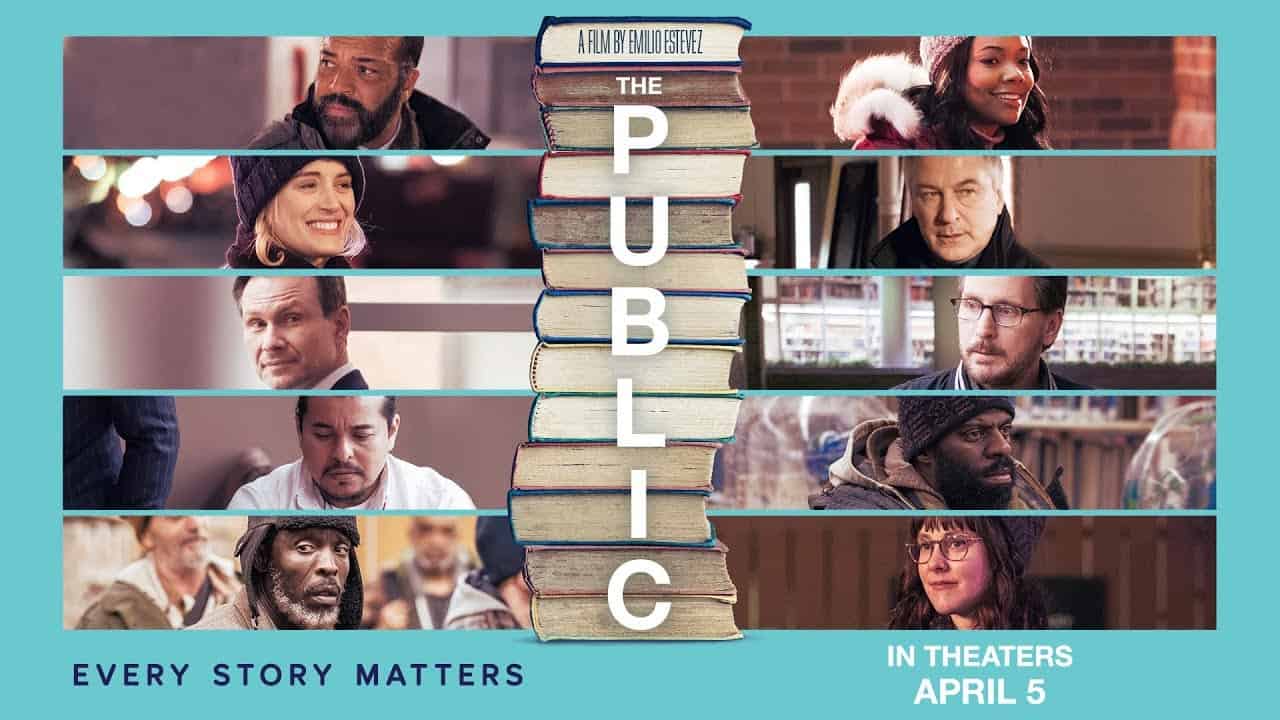
11
AprThe Public
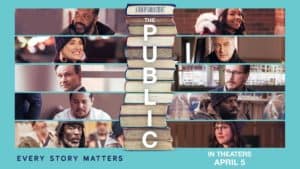 In the 1986 film The Breakfast Club, Andrew Clark and four odd rebels are restricted to the high school library in an all-day Saturday detention. 23-year old actor Emilio Estevez performs the part of clean-cut Andrew, the state wrestling champion. Estevez’ character feels out-of-place in detention; he is the jock in his letter jacket, confined with what he considers as misfits. He begins this long day annoyed that he is punished for a cruel prank that his father made him do.
In the 1986 film The Breakfast Club, Andrew Clark and four odd rebels are restricted to the high school library in an all-day Saturday detention. 23-year old actor Emilio Estevez performs the part of clean-cut Andrew, the state wrestling champion. Estevez’ character feels out-of-place in detention; he is the jock in his letter jacket, confined with what he considers as misfits. He begins this long day annoyed that he is punished for a cruel prank that his father made him do.
The day in detention is spent with bad behavior, rude pranks, bitter tears and heartless insults, and, finally, with sincere confessions and friendship. While The Breakfast Club is a story of civil disobedience against what might seem ridiculous and unfair rules, it is, most of all, a lesson about the bonding and relationships that can arise when social barriers are broken down amid tension and emotional honesty.
In his twenties, Emilio Estevez went on to act in other films with his fellow Brat Packers – costars Judd Nelson, Ally Sheedy, Anthony Michael Hall, Molly Ringwald, and others – starred in ten coming-of-age movies beginning with The Outsiders in 1983 and ending with Wisdom in 1986.
Estevez is the son of Martin Sheen and the brother of Charlie Sheen. When he began finding acting success, his father Ramon Estevez took the stage name of Martin Sheen, a name that is a blend of people who had helped him in life. Young Emilio chose to keep the family name of Estevez partly because he wanted to be recognized on his own merit, without the influence of his father Martin.
Estevez gives credit to his father, however, for gifting him with the talent that runs through his family, and for giving him a movie camera at the age of 11. Father Sheen brought 14-year old Emilio on location of the filming of Apocalypse Now when he was 14. If Emilio wasn’t born an activist and advocate for social change, his father’s influence and avant-garde upbringing certainly put him on that path.
In high school at Santa Monica High School in California in 1980, Emilio starred in a film he co-wrote about Vietnam veterans, Echoes of an Era. After he had acted in, wrote, and/or directed 26 films before 1999, the nearly 40-year old actor decided he wanted to “start making films he wanted to see.” That resolve resulted in only nine films between 1999 and 2010, the year of his last film.
In 2007, 13 years ago, Estevez read an April 2 Los Angeles Times column by the retired Assistant Director of the Salt Lake Public Library, Chip Ward. Written Off was actually excerpted from a blog post by Ward.* Ward sympathetically described the homeless, harmless, poor, and mentally ill who simply are looking for a warm, safe place to welcome them. Ward writes, “Public libraries… are open and tolerant, even inviting and entertaining places for [the homeless and mentally ill] to seek refuge from a world that will not abide their often disheveled and odorous presentation, their odd and sometimes obnoxious behaviors and the awkward challenges they present.” Estevez was intensely moved by the article – both by his own need to expose humanitarian issues that trouble today’s society, but also by the honest prose of a librarian who felt much the same.
Estevez knew the public library well in 2007 – he had spent days a decade before in the Central Branch of the Los Angeles Public Library researching for his film Bobby, based on the assassination of Robert Kennedy. Bobby premiered in 2006 to critical reviews.
Estevez set about writing The Public in 2007, after reading that LA Times article, and then began hanging out again in the library – this time people watching. He wanted to write an important screenplay about the Public – the homeless and mentally ill in our society who find acceptance and comfort in the embrace of the open, tolerant and welcoming rooms of another Public (the library).
It’s no secret that the homeless and mentally ill have nowhere to go during the daytime hours when the shelters are closed. Stores and other off-limits public buildings do not welcome them. But libraries do not discriminate – there is “no first-class cabin within the walls of the library.” Public libraries across this country are hives of activity for all social classes. Darien, Connecticut, one of the most affluent communities in the United States, boasts that over 95% of its residents have a public library card. Lady Bird Johnson said of the public library, “There is no place in any community so totally democratic as the town library. The only entrance requirement is interest.” And interest in a safe and welcoming environment is what has become the de facto shelter of the public library.
Public libraries have also become government and private business access points – Social Security, IRS, healthcare and job applications have moved online where vulnerable populations must go to complete them.
The Public hit theaters on Friday, April 5 after 12 years in the making. I was fortunate enough to see the movie both in July 2018 and again in January 2019 during screenings at the American Library Association conferences with Estevez in attendance. He was interested in learning what librarians felt about the depiction of their profession. The standing ovations said it all. Librarians felt that the business of librarianship was well-represented and that the fragile populations who find safe haven in the library were depicted honestly.
Estevez’ co-star Christian Slater also starred in the film Bobby. Slater says, “One of the things I truly admire about Emilio is… his passion… to take on the real issues and raise awareness.” The lessons Andrew Clark learned in the high school library were not lost on Emilio Estevez. In The Public, he is again amongst the rebels he must bond with to move beyond society’s social barriers.
The Public will be screened at the Dedham Community Theatre this month. The library will screen the film once the video becomes available and will have copies to borrow.
Chip Ward’s entire blog post can be found in How the Public Library Became Heartbreak Hotel at TomDispatch.com, April 2010.
Charlotte Canelli is the Director of the Morrill Memorial Library in Norwood, MA. Look for her article in the April 11, 2019 issue of the Norwood Transcript.
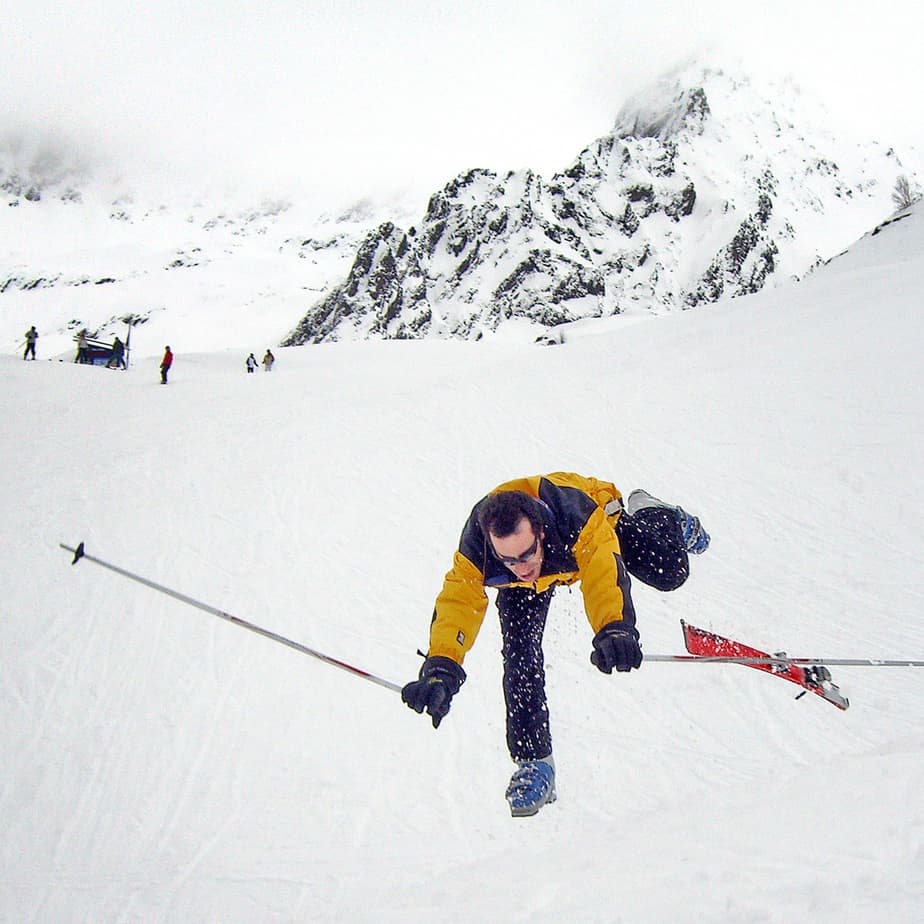
4
AprI Failed Immediately. Then I Succeeded.
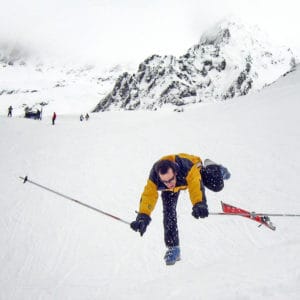
Swoosh. Swish. Chatter. Crunch. Silence. Swoosh. Chatter. Crash.
The sound of me learning to ski, just a few weeks ago at the end of the ski season at Killington Vermont. Even though I grew up in the frozen north, I never learned to downhill ski. My mother had me on ice skates almost as soon as I could walk, and we had weeks of snowshoe and cross-country ski units in gym class. But the downhill skiing never took.
I recall one school trip as a young child to Ski Big Tupper. I don’t remember now what prompted them to take us on a skiing field trip over an hour away, but I do remember that I didn’t like it. Not one bit. I fell over, got cold and wet, couldn’t get back up, and the other kids laughed at me. I tried something new, probably under duress, failed immediately and vowed never to ski again.
Cut to winter 2019, and someone has convinced me that although I had a bad experience trying to ski as a child, maybe I should try it again as an adult who is not under duress to learn, and who at the very least could enjoy the benefits of après ski. It would also help to use better equipment (I don’t even think we had ski poles or real ski boots in Tupper, let alone goggles) and take an actual instruction class for adult novice skiers.
By the end of the trip I was off the learner slope and happily skiing on actual trails, but I failed a lot before I succeeded. People have different learning styles, and for whatever reason I wasn’t quite getting what the instructor was saying. The instructions made sense, but my feet just weren’t doing what they should and he couldn’t explain it in a way that would correct me. My biggest obstacle was being able to turn – kind of an important skill to master if you’re going to do anything other than ski in a straight line. My friend finally hit on the mental trick that worked for me: to learn how to turn I held my hands out in front of me and actually moved my hands like I was steering a big wheel, and bingo presto I was turning. My theory for why this method worked is because I’m good at hand-eye coordinated tasks, but am hopeless at foot-eye activities such as soccer and, apparently, learning to ski.
Learning brand new things as an adult is difficult. Lifelong learning is important for brain health and makes you a more scintillating conversationalist, but teaching yourself to do something you’ve never tried before is scary. For one thing, we’re afraid of failing. Ego and the desire to save face gets in our way, and we can get discouraged when we don’t immediately succeed at a new endeavor.
We see this all the time in the library. When I’m working on the Reference Desk, I help people do all sorts of things on the computer, on their phones or tablets, and on library technology such as the scanner or copier. Every day, adults apologize to me when they don’t do something perfectly the first time they try it. This self-deprecation really isn’t necessary though, because every single person who knows how to do something well started out not knowing how to do it. We all had to turn on the computer for the first time, muddle our way through the first screen of prompts on the fax machine, and figure out how to get back up again after falling on a pair of skis. Whatever the skill, none of us do it right the first time. The important thing is to take a breath, dust yourself off, and try, try again.
I’m especially proud of the students in our Learn to Knit and Learn to Crochet classes, which we offer on alternating months in the fall, winter, and spring. We get a lot of adults who have been curious about knitting or crocheting, but who have never thought of themselves as crafty or worked with yarn before. We keep the classes small and create a safe space where we all start with the basics, helping students along on an individual level. These folks are literally training their muscles to do something they’ve never done before, and learning a craft can be frustrating at first – we know it’s frustrating, because we’ve been there. As an instructor, it’s a fun challenge to try to figure out just the right way of explaining the technique or helping the student visualize what they need to do next, until suddenly the craft clicks for them.
We offer a number of hands-on learning opportunities at the library, including Learn to Knit and Learn to Crochet classes. We also have one-on-one technology appointments where you can bring your device or use our laptop, and sit down with one of our Technology Librarians to learn a new skill. Please contact the Reference Desk, 781-769-0200 x110, or visit our website, norwoodlibrary.org, to join one of the “Learn to” classes or book a technology appointment. If you’d like to experience the challenge and reward of teaching someone a brand new set of skills and make a real impact on their life, consider becoming an English as a second language (ESOL) tutor through our Literacy program (781-769-4599).
However, I regret to inform you that at this time the Morrill Memorial Library will not be adding learn to ski classes to our roster of services.
Liz Reed is the Adult Services Library at the Morrill Memorial Library in Norwood, MA. Look for her article in the April 4, 2019 issue of the Norwood Transcript.
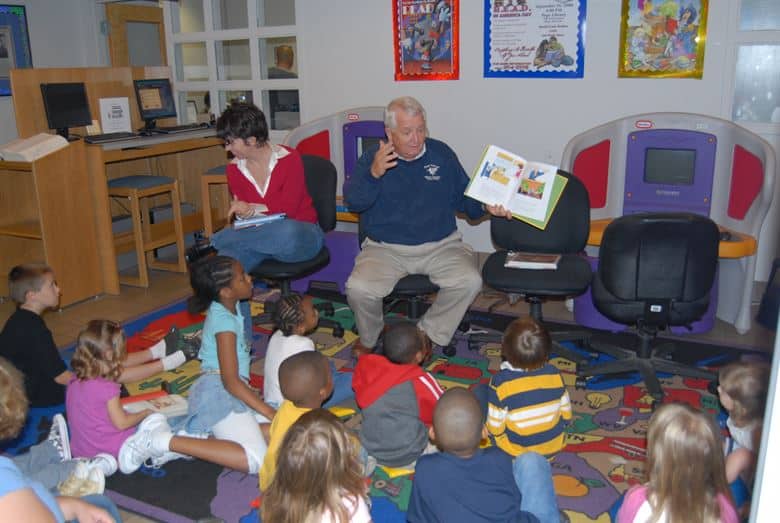
28
MarHow to be a Good Reader
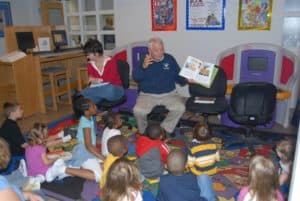 If you’re reading this, you can definitely read! Congratulations! So why do you need advice on how to be a good reader? Reading aloud, especially to children, is skill that looks deceptively easy but requires a great deal of finesse to do well. We are in the age of the “guest” or “mystery” reader. It’s quite common now for relatives to be invited into a classroom setting to read aloud. In the Children’s Room, I field many questions from terrified grown-ups about what books they should read to their child’s or grandchild’s class.
If you’re reading this, you can definitely read! Congratulations! So why do you need advice on how to be a good reader? Reading aloud, especially to children, is skill that looks deceptively easy but requires a great deal of finesse to do well. We are in the age of the “guest” or “mystery” reader. It’s quite common now for relatives to be invited into a classroom setting to read aloud. In the Children’s Room, I field many questions from terrified grown-ups about what books they should read to their child’s or grandchild’s class.
Recent studies show strong evidence that reading aloud to children of all ages is critical to maintain literacy skills, even for children who are independent readers. Many adults forget the joy of being read to and stop reading aloud to children once they can read themselves. As parents, we are all crunched for time, but making time for bedtime stories is important for several reasons. Reading provides a wonderful bonding time between parents and children, which older children still crave.
Reading aloud to older kids also whets their appetites for stories they might struggle to read on their own. According to Jim Trelease in his book, The Read Aloud Handbook, children’s reading comprehension skill doesn’t catch up with their ability to listen and process information until around 8th grade. By exposing kids to exciting characters and plots while broadening their vocabulary, parents’ reading aloud feeds their appetite for stories and helps with comprehension.
Practice makes perfect, and preparation is the key to feeling comfortable in front of any group. Once you get a few techniques down, you’ll feel more confident reading to a class or to a child in your life. Here are my top tips for success:
Consider your audience: The first step is choosing the right book to read. Think about the age of the children you’ll be reading to and what interests and attention span they have. Are you reading to a toddler classroom or a group of 4th graders? Don’t panic if you aren’t up to date on the latest picture book titles or children’s literature trends; that’s our job at the library! Younger children do best with basic story lines, large, clear illustration,s and predictable outcomes. Older kids still love picture books as well, but can handle more complicated themes and often respond better to more subtle humor. This is why toddlers and preschoolers adore classics like Bill Martin’s Brown Bear, Brown Bear, What Do You See and Chicka Chicka Boom Boom. Older kids can appreciate Drew Daywalt’s Legend of Rock, Paper, Scissors or The Day The Crayons Quit.
Be thorough: Once you select the right material, read through it silently and then aloud. Notice any natural pauses or rhythms to the text. Notice any humor and how you might vary your pace for the best delivery. DO NOT wait to read the book until you are in front of your audience. I can guarantee crowd pleasers like Don’t Let the Pigeon Drive The Bus or The Book With No Pictures will go over well, but not if you don’t get the timing right.
Practice, Practice, Practice: There’s no getting around this one. The best way to get better at reading aloud is to simply do it. I personally cannot read aloud to thin air, so I often pull in a colleague or my husband to be my audience. As you read aloud, watch for audience reactions. If the person you are reading to isn’t laughing or looking on thoughtfully at the right spots, you may need to try again. Reading with expression is also important. Speaking in a monotone voice, especially when reading dialogue between characters, is the fastest way to lose a child’s attention. If you feel confident enough, try out different voices for different characters to help kids differentiate who is speaking.
Slow Down: I’m a fast talker. Most of us who were raised in the Northeast are used to speaking with a clipped accent. Fast talking is very efficient and great for everyday conversation, but it is a hindrance when trying to read aloud. Great readers can build drama and tension through pacing, and if you are reading too quickly your words will get lost. We tend to speed up when we are nervous or in front of an audience. Even if you think you are reading slowly, you are probably reading too fast. Practice also helps with slowing down.
Reading aloud is a powerful skill beyond the classroom. It’s not as highly valued as it once was, but an audience will immediately appreciate your hard work when you are able to deliver a story, Bible verse or poem with ease. It’s also an excellent way to communicate ideas and values, especially the love of reading. For more on the power of reading aloud and how it can improve your own reading, please check out Jim Trelease’s book The Read Aloud Handbook from the library today.
Kate Tigue is Head of Youth Services at the Morrill Memorial Library in Norwood, MA. Look for her article in the March 28, 2019 issue of the Norwood Transcript.
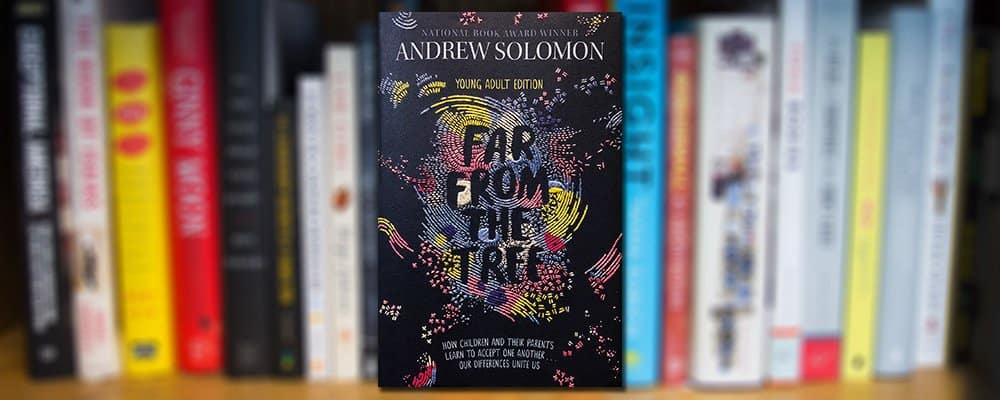
22
MarWhen Children Fall Far from the Tree
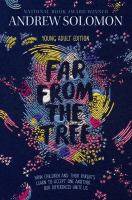 When Alice fell down the rabbit hole in her Adventures in Wonderland, she was chasing the White Rabbit. When I fall down into a rabbit hole, it too means that my own White Rabbit, or curiosity, has gotten the best of me. I’ve been known to lose significant chunks of time only to reappear to meet my demands in life. As a college student, this happened in the library – either in the drawers of extensive card catalogs or in the endless mazes of the book stacks. Sometimes I surrounded myself with so many massive volumes of the Reader’s Guide(s) to Periodical Literature that I was not only figuratively, but literally, lost among them.
When Alice fell down the rabbit hole in her Adventures in Wonderland, she was chasing the White Rabbit. When I fall down into a rabbit hole, it too means that my own White Rabbit, or curiosity, has gotten the best of me. I’ve been known to lose significant chunks of time only to reappear to meet my demands in life. As a college student, this happened in the library – either in the drawers of extensive card catalogs or in the endless mazes of the book stacks. Sometimes I surrounded myself with so many massive volumes of the Reader’s Guide(s) to Periodical Literature that I was not only figuratively, but literally, lost among them.
As a naturally curious student of life, and a librarian at that, this curiosity occurs almost daily. The difference today, of course, is that there are now many more endless opportunities to get lost. Give me a website like the Internet Movie Database (IMDB), Wikipedia (gasp!) or the Urban Dictionary, and I’m meters down the rabbit hole faster than you can say “Wonderland.” Open up the candy boxes of the Internet like the Library of Congress, National Geographic, or Google Scholar and off again.
The rabbit hole also beacons me down when I visit my paid subscriptions to Netflix and Sundance, or our library services – Hoopla! and Kanopy. I’m a documentary junkie, and even the titles that don’t sound the least appealing to me hook me instantly. But then I often find myself pressing the pause button because I need to know more. Details of every character and each location. Links to clips and articles. It always leads to the library catalog and seeking those books that could tell me more.
Many of those rabbit holes become library columns. And just like my habit as a college student, I never feel that I’ve opened up enough of those candy boxes and consumed the contents. My husband, Gerry, will attest to the fact that I often start my columns with an idea on a Friday night and spend much of my weekend on my laptop, free-falling among the twists and turns of my latest curiosity.
A few weeks ago, I stumbled online upon the documentary Far From the Tree (and now available as a DVD in our library.) It didn’t take long for me to discover that Far From the Tree was based upon a 2012 book with the same name by Andrew Solomon, subtitled Parents, Children, and the Search for Identity. Soon, I unearthed the young adult edition with the subtitle How Children and Their Parents Learn to Accept Another … Our Differences Unite Us. Both of Solomon’s books qualify as sizable tomes for their audiences. The 2017 edition adapted for younger readers is over 400 pages. With notes, a bibliography and index, the original Far From the Tree is nearly 950 pages.
In the books and documentary, Solomon studies children who, unlike “acorns which fall from the oak tree,” fall “far from the tree.” Solomon explores the circumstances that cause children to be unlike their parents and even their siblings. These children and their families cope with deafness, dwarfism, Down syndrome, autism, schizophrenia, and other disabilities. They may be gay or transgender, criminals or murderers. In his lengthy book, he describes pages of cases and individuals in each of these named circumstances.
The documentary is simpler but still powerful. IFC (Independent Film Company) and Director Rachel Dretzin include intense childhood videos of children growing up and who are dealing with their differences. Also included are testimonies of the family members who are coping with accepting them.
Author, researcher, journalist, and professor, Andrew Solomon has a well-deserved reputation. The first chapter of both editions of his books describes his dyslexia and the resulting nurturing love of his mother who helped him learn despite it. Solomon graduated from the Horace Mann School in New York with honors at age 18. He earned his BA from Yale and a Master’s and Ph.D. from Jesus College in Cambridge England. He wrote The Noonday Demon, a memoir of his own depression and a definitive study of depression that earned the 2001 National Book Award and was a finalist for the Pulitzer Prize in 2012. Terry Gross of NPR’s Fresh Air interviewed Solomon in 2015 after an update to The Noonday Demon with an additional chapter on new treatments. Solomon has four TED Talks to his credit. One reflects explicitly on the insight he shares in Far From the Tree. (Thankfully, inspirational TED and TEDx talks can all be viewed online, for free.) In Love, No Matter What (2013) Solomon shares what he learned from children, parents, and families he talked to about learning to unconditionally love and accept differences from what was initially dreamed.
Solomon is a professor of Clinical Psychology at Columbia University Medical School in New York City and is deeply involved with work related to women’s depression during and after pregnancy, doctoral research he accomplished before being awarded the degree in 2013. He is also actively engaged in LGBT rights and acceptance of lesbian, gay, bisexual and transgender individuals in their families.
Solomon’s mother did not accept Andrew’s admission that he was, as a young adult, gay. In his books, and on his website (andrewsolomon.com), he argues that while he now knows that his parents always loved him, he did not recognize it as love because he felt that they rejected him. His mother sadly died of cancer years before her son earned much of his success or her acceptance; Andrew was in his late 20s at the time. His father, however, is still alive and spoke at his son’s wedding to his husband John in 2007, a poignant moment was shown on screen in the documentary.
Far From the Tree is about courage, compassion, and acceptance. These unique children are not defined by their differences when their families communicate their love for them and triumph over the odds. It is an intensely strong film.
Solomon wrote his autobiographical debut novel, A Stone Boat, in 1994. His last book, Far and Away: Reporting from the Brink of Change was written in 2016. I’m thankful I tripped upon the documentary that led me down my rabbit hole, discovering more about Andrew Solomon through his books and online, along his journey. All of his powerful books, and the documentary based upon Far From the Tree, are available at our library, and through the MLN catalog.
Charlotte Canelli is the Director of the Morrill Memorial Library in Norwood, MA. Look for her article in the March 21, 2019 issue of the Norwood Transcript.
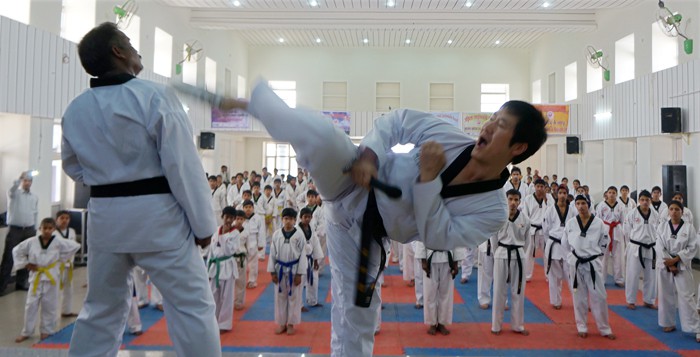
14
MarKick, Punch, It’s All in the Mind
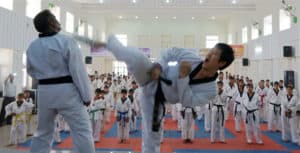 The sparring gear I was wearing made my body feel twenty times hotter than the dojang that I was sparring in. I was fighting a guy who was slightly older than me in terms of age, but light years ahead of me in terms of skill. I wasn’t just sweating because of the heat; adrenaline was pumping through my veins, my mind was in high alert, and sparring is nothing like doing drills. With drills, you are kicking pads or punching into the air at your reflection in the mirror or at some phantom opponent in your mind. In sparring, you are simulating a real fight, with a real person, who can really hurt you, which is simultaneously exciting and nerve-wracking.
The sparring gear I was wearing made my body feel twenty times hotter than the dojang that I was sparring in. I was fighting a guy who was slightly older than me in terms of age, but light years ahead of me in terms of skill. I wasn’t just sweating because of the heat; adrenaline was pumping through my veins, my mind was in high alert, and sparring is nothing like doing drills. With drills, you are kicking pads or punching into the air at your reflection in the mirror or at some phantom opponent in your mind. In sparring, you are simulating a real fight, with a real person, who can really hurt you, which is simultaneously exciting and nerve-wracking.
I remember trying to get in a few roundhouse kicks to his chest, and at one point even tried to land a crescent kick to his head, but he was FAST, and was using the best weapons in his arsenal to combat me: his mind and his experience. It seems as if he could read my every move before I even made it. I kept trying to land blows, but it was to no avail, until I saw an opening! I had dodged one of his back kicks, which I thought was a mistake on his part, which left his back exposed for a moment so I went in with a front kick to land a blow.
But it was not a mistake on his part, I was being setup.
I went in for the kick, and saw him fling himself around quickly, then felt a quick, hard impact to my head. After that, my world went fuzzy. My headgear, which was tightly fastened to my head, went sideways across my face. My arms, which should always be in the “fighting position” during sparring, went straight down to my sides. I stared blankly in front of me in a daze and everything went out of focus. He had landed a roundhouse kick straight to my head. I think the only reason I didn’t fall over and hit the mat was because my Taekwondo instructor, who was facilitating the fight, had told him not to land another blow.
Ah, the joys of martial arts. Roundhouse kicks to the head aside, learning taekwondo was a great experience, and learning ABOUT taekwondo was an equally enlightening experience. Through taekwondo I was exposed to the Korean language, food, history and culture. I also eventually got better at not getting kicked in the head! Here at the library, we have plenty of books and e-books that can teach you how to be a better practitioner of the arts, and can also deepen and enrich your understanding of what makes each martial art unique.
Taekwondo is an art that originated in Korea, and was formally established shortly after World War II, but has even deeper roots in older arts like Japanese karate and numerous Chinese and Korean martial arts. It was introduced here in America by Jhoon Rhee, the “Father of American Taekwondo” in the late 1950s who opened his first martial arts studio in Washington, D.C. in 1962. Tae kwon do’s literal interpretation is “tae” which translates to stomp or trample, “kwon” which translates to fist, and “do” which translates to “way.” The book The Secrets of Tae Kwon Do: Principles and Techniques for Beginners, by Jennifer Lawler is a great resource for learning about the history, philosophy, forms, and techniques of taekwondo. All martial arts are about combat at their core, and most have roots in some form of intense military training, but, as Lawler states in her book, “The ultimate goal of Taekwondo training is the development of qualities that make you a better person. All Taekwondo students are expected to learn and follow the Five Tenets of Taekwondo” which are:
- Courtesy
- Integrity
- Perseverance
- Self-Control
- Indomitable Spirit
These tenets, along with the theme of personal betterment, are the reason many people pursue martial arts in general. As Lawler states, “Part of the process of living the way of taekwondo is to appreciate how to use the tenets not just in the training hall but in everyday life.” Martial arts is not just about training to defend yourself, it’s about reaching your highest potential and learning inner skills that can be used in all areas of your life.
I used to enjoy watching kids practice their drills and spar before my afternoon class would start. Unlike us adults, kids do not put in a full day at work before class, and are not as worried about getting hurt or being sore the next day. They just give it 110%! We have some great resources in our Children’s department for your little warriors. Taekwondo! by Terry Pierce is a Step into Reading book that will teach your little ones the fundamentals of reading and inspire them in their training. For the slightly older reader, we have Taekwondo, by Tim O’Shei which is a nice introduction to the history of taekwondo as both an art, and as a sport. As always, our Hoopla app is brimming with books for both kids and adults about taekwondo’s history and style.
Of course, taekwondo is just the tip of the iceberg. There are countless martial arts from all corners of the world for you to learn, and learn about. Each has their own unique history, distinct style, culture and philosophy. Here at the Morrill Memorial Library, we have all the resources you need to improve your fighting skills and hone the greatest weapon in your arsenal: your mind.
Check out some of these other great reads to learn more.
Tae Kwon Do: the Ultimate Reference Guide to the World’s Most Popular Martial Art, by Yeon Hee Park
Tae Kwon Do the Indomitable Martial Art of Korea: Basics, Techniques and Forms, by Dong Keun Park & Allan Schein
Tae Kwon Do: the Korean Martial Art, by Richard Chun
Brian DeFelice is the Information Technology Librarian at the Morrill Memorial Library in Norwood, MA. Look for his article in the March 14, 2019 issue of the Norwood Transcript.
